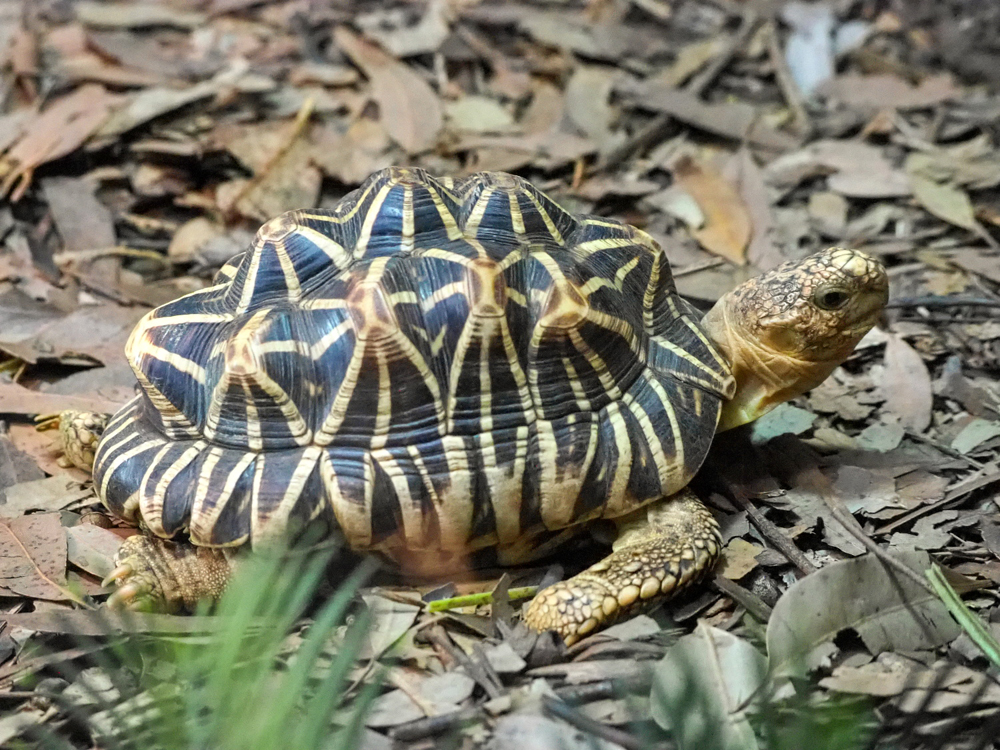 |
| This is the same file just processed using Luminar Neo's noise reduction filter - not nearly as effective as the DXO product. |
 |
| Firetail Finch. Tricky to snap in its small enclosure - dark at the back section, dappled and overexposed light at the front and constant movement! 1/320s @ f4, ISO1250. Pic by Natalie Hitchens. |
 |
| An immature (Gouldian finch?) photographed against a dark background - which effectively removes any tell-tale signs of wire mesh. 1/1250s @ f4, ISO2500, -0.7 f-stop. |
 |
Wedge-tailed Eagle - another very tricky portrait as this huge bird was at the rear of the cage, perched in dappled sun with a slatted timber background. Focal length 600mm. 1/8000s f4, ISO1600. |
 |
| Indian Star Tortoise Endangered species from India, Pakistan and Sri Lanka 1/100s @ f5.6, ISO10000 (Pic by Graham Robinson). |
 |
| A pair of Marmosets - tiny little critters smaller than a cat - very active and hard to capture in camera. 1/250s @ f5.6, ISO640. Pic by Graham Robinson. |
 |
| Gouldian Finch in all of its colourful glory - these birds have to be seen to be believed. Pic by Natalie Hitchens. |
 |
| Another shy tree frog hiding up at the top of the cage. 1/320s @ f4, ISO1000. Pic by Natalie Hitchens |
 |
| Meerkat doing what meerkats do best - be on constant lookout for danger, not from the human visitors that they mostly ignore, but aerial predators like birds of prey. Pic by Natalie Hitchens. |
 |
| Shaggy billy goat in the kid's farm section of the zoo. Pic by Natalie Hitchens. |
















No comments:
Post a Comment